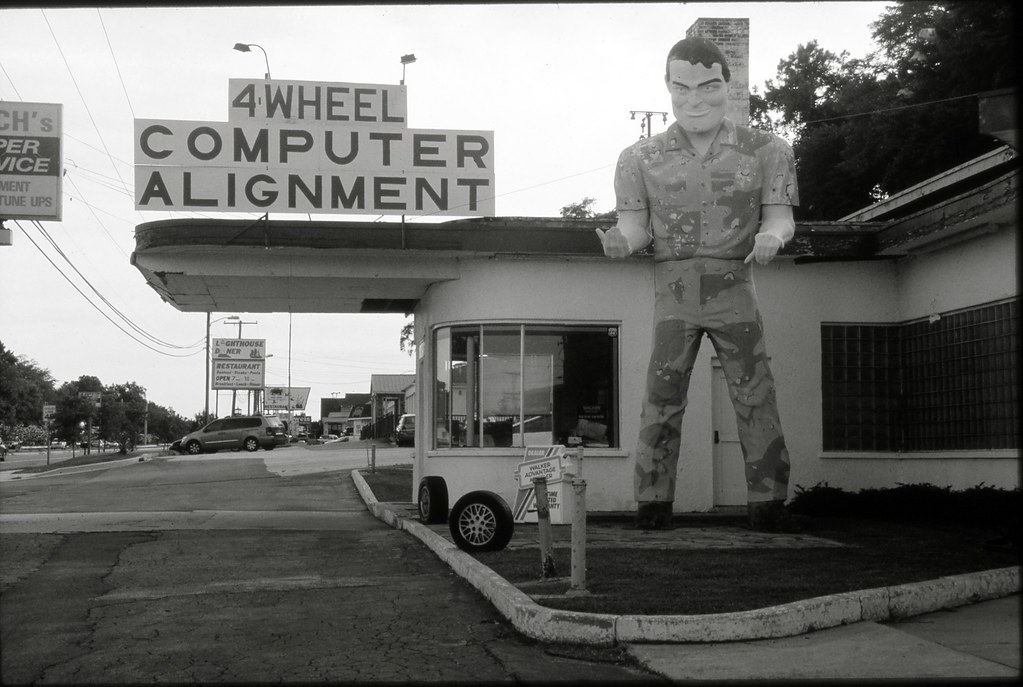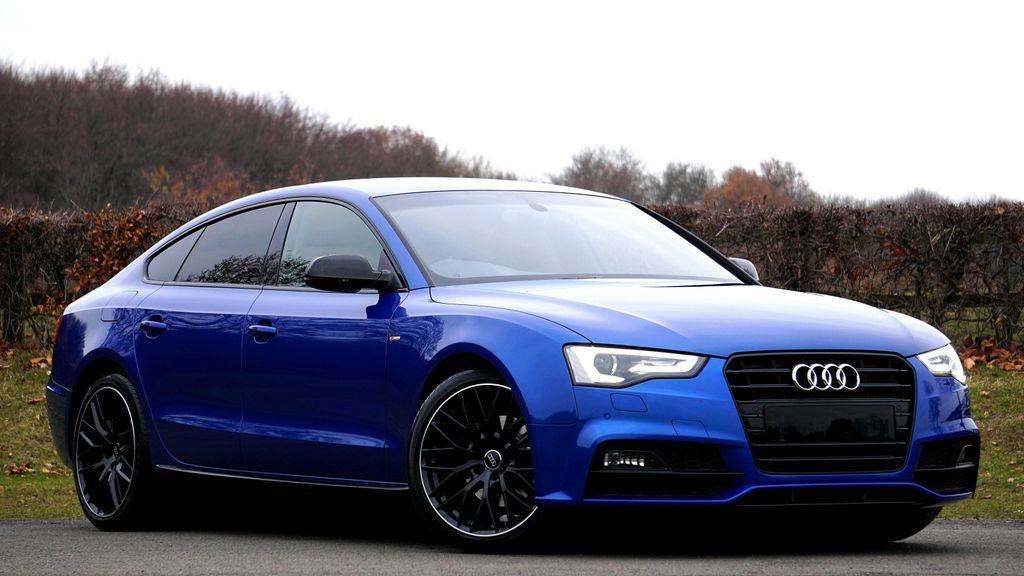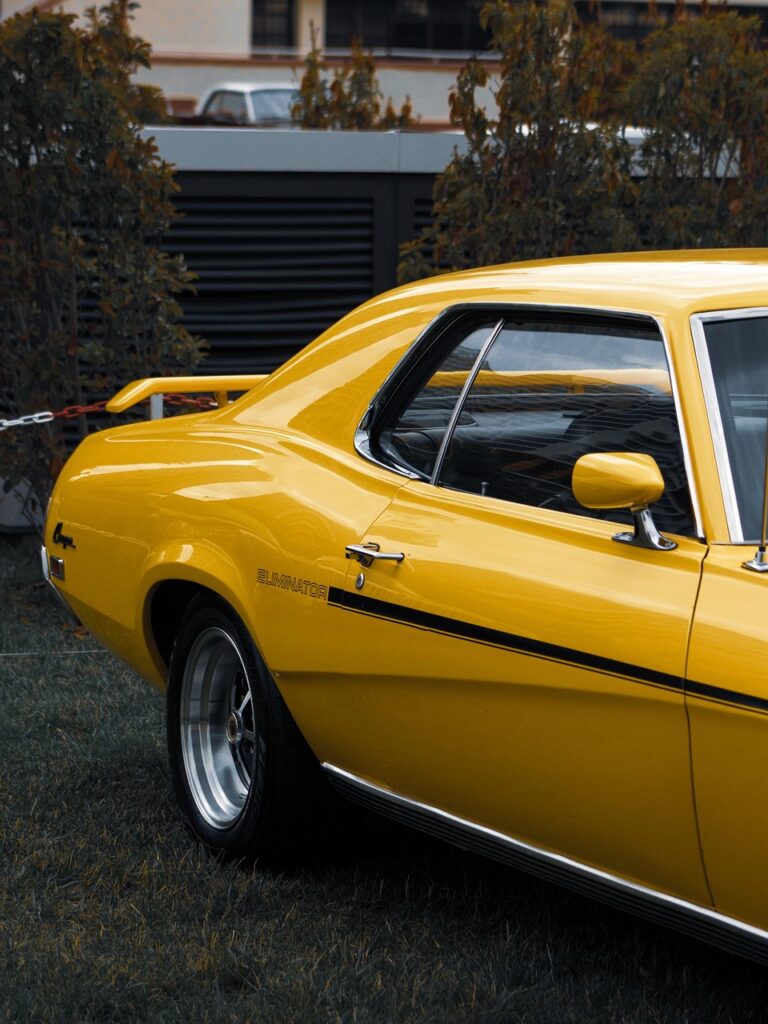
The American automotive landscape is a wild, unpredictable beast. For every roaring success story, there are countless whispers of brilliance that went unheard, and unfortunately, more than a few thunderous disappointments draped in flashy marketing. We’re talking about those cars that either received far too much fanfare for what they actually offered, or those that genuinely deserved a spotlight but were left to linger in the shadows.
This isn’t just about horsepower figures or quarter-mile times; it’s about the very soul of a machine, its cultural impact, and whether it lived up to the promises plastered across billboards and magazines. We’ve dug deep into the archives, polished off some controversial opinions, and brewed a strong pot of coffee to dissect the good, the bad, and the truly baffling. Get ready, because we’re about to put some sacred cows on blast and champion a few forgotten heroes.
In this first leg of our journey, we’re pulling back the curtain on seven American cars that, frankly, got way too much love. These are the models that, despite their initial buzz or surprising sales figures, ultimately fell short, leaving a legacy of question marks rather than exclamation points. Let’s not mince words; some reputations are built on sand, and these vehicles are the proof.

1. **2003 Hummer H2**
Ah, the early 2000s. A time when SUVs grew to monstrous proportions and subtlety was left in the dust. The 2003 Hummer H2 rolled onto the scene like a tank, promising rugged, military-grade capability straight from the battlefield. Its imposing silhouette and aggressive stance screamed “unapologetic off-roader,” and millions bought into the tough-guy image, ready to conquer suburban speed bumps with gusto.
However, beneath that intimidating exterior lay a shocking truth: the H2 was, in essence, a gussied-up Chevrolet Tahoe. It wasn’t built for daring desert raids; it was designed for mall parking lots. Sure, it looked the part, but its performance was anything but. Drivers quickly discovered its lumbering gait, sluggish acceleration, and a thirst for fuel that would make an oil sheikh blush.
The interior wasn’t much better, offering surprisingly limited cargo space for such a colossal vehicle. Its “military-grade” toughness evaporated the moment you tried to navigate a tight spot or found yourself battling anything more challenging than a puddle. The H2 became less of a testament to American engineering and more a symbol of excess—a vehicle that valued image over actual utility, form over genuine function, and conspicuous consumption over common sense.
It was a cultural icon, no doubt, but for all the wrong reasons. It embodied an era of “bigger is better” without delivering the substance to back it up. Looking back, the H2 stands as a prime example of how clever marketing and a booming trend can fool millions into buying a vehicle that was fundamentally flawed, a wolf in sheep’s clothing that ultimately turned out to be more bark than bite. A truly overrated beast if there ever was one.
Car Model Information: 2003 Hummer H2
Name: Hummer H2
Manufacturer: AM General
Production: 2002–2009
ModelYears: 2003–2009
Assembly: Mishawaka, Indiana,Kaliningrad,designer = Clay Dean (2000)
Class: Full-size SUV
BodyStyle: Sports utility vehicle,pickup truck
Platform: GMT800
Related: Chevrolet Silverado,Chevrolet Avalanche,Chevrolet Tahoe,Chevrolet Suburban,Cadillac Escalade
Layout: Front-engine, four-wheel-drive layout,four-wheel drive
Engine: General Motors LS-based small-block engine#LQ4
Transmission: 4L60E,4-speed 4L65E automatic (2005–2007),automatic transmission
Wheelbase: 122.8 in
Abbr: on – 6.2 L
Length: 203.5 in
Width: 81.3 in
Height: 2002–03: {{convert,77.8,in,mm,0,abbr=on
Weight: {{convert,6400,lb,kg,0,abbr=on
Categories: 2000s cars, AM General vehicles, All-wheel-drive vehicles, All articles needing additional references, Articles needing additional references from January 2024
Summary: The Hummer H2 is a full-size off-road SUV that was marketed by Hummer and built in the AM General facility under contract from General Motors from 2002 until 2009. It is based on a modified GMT820 GM three-quarter-ton pickup truck in the front and a half-ton 1500 frame in the rear. A four-door pickup truck version with a midgate that opens the vehicle’s interior to the external cargo bed was introduced for the 2005 model year as the H2 SUT (sport utility truck).
Get more information about: Hummer H2
Buying a high-performing used car >>>
Brand: Hummer Model: H2
Price: $13,980 Mileage: 152,679 mi.
Read more about: Navigating the SUV Market: 14 Models U.S. Consumers Should Approach with Caution in 2024-2025
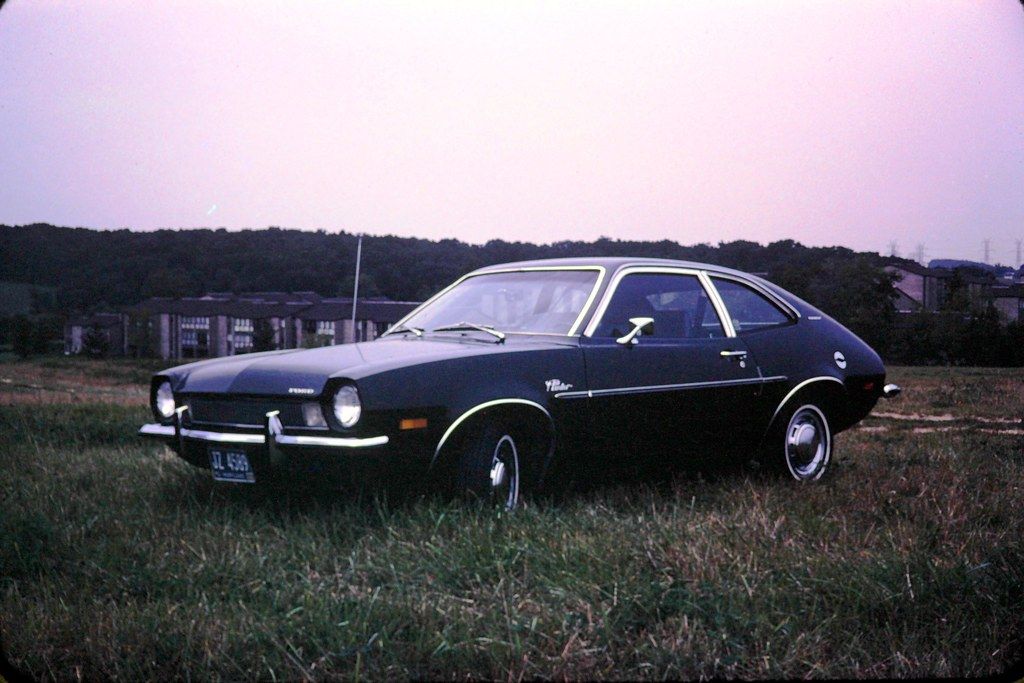
2. **1971 Ford Pinto**
Few cars have a reputation as explosive as the 1971 Ford Pinto, and we mean that literally. This wasn’t just a misstep; it was a catastrophic design flaw that etched itself into the annals of automotive infamy. Ford rushed the Pinto to market with a single-minded goal: to compete with the wave of Japanese compacts that were threatening to swallow the American market whole. Speed was prioritized, safety, it seemed, was an afterthought.
The core issue was a criminally poorly designed gas tank. Positioned precariously close to the rear axle, it was notoriously vulnerable to rupture in even low-speed rear-end collisions. The result? Deadly fires that claimed lives and ignited a firestorm of lawsuits. The name “Pinto” became synonymous with corporate negligence and a chilling indifference to consumer safety.
Despite the horrific headlines and the ensuing legal battles, here’s the kicker: the Pinto actually sold nearly three million units before it was finally retired. That’s a staggering number for a car with such a deadly secret. It speaks volumes about the market demand for compact, affordable cars at the time, and perhaps a public initially unaware of the lurking danger.
The Pinto’s story is a stark reminder that sales figures don’t always equate to quality or, more critically, safety. It’s a car whose name will forever be linked to tragedy, a monument to the perils of prioritizing profit margins over passenger protection. Forget the lawsuits? Unlikely. The Pinto exploded its own reputation, and for good reason. It was an overrated gamble that cost too much.
Car Model Information: 1978 Ford Pinto RUNABOUT HATCHBACK
Name: Ford Pinto
Caption: Ford Pinto
Manufacturer: Ford Motor Company
Aka: Mercury Bobcat
Production: September 1970 – July 1980
ModelYears: 1971–1980 (Pinto),1974–1980 (Bobcat)
Assembly: Edison, New Jersey,Milpitas, California
Designer: Robert Eidschun (1968)
Class: Subcompact car
BodyStyle: Sedan (automobile),sedan delivery,station wagon,hatchback
Related: #Mercury Bobcat (1974–1980),Ford Mustang (second generation)
Layout: Front-engine, rear-wheel-drive layout
Chassis: Unibody
Engine: unbulleted list
Abbr: on
Disp: Ford Cologne engine
Transmission: unbulleted list
Wheelbase: 94.0 in
Length: 163 in
Width: 69.4 in
Height: 50 in
Weight: convert
Predecessor: Ford Cortina#Mark II (1966–1970)
Successor: Ford Escort (North America)
Categories: 1980s cars, Articles with short description, Cars discontinued in 1980, Cars introduced in 1970, Commons category link from Wikidata
Summary: The Ford Pinto is a subcompact car that was manufactured and marketed by Ford Motor Company in North America from 1970 until 1980. The Pinto was the first subcompact vehicle produced by Ford in North America.
The Pinto was marketed in three body styles throughout its production: a two-door fastback sedan with a trunk, a three-door hatchback, and a two-door station wagon. Mercury offered rebadged versions of the Pinto as the Mercury Bobcat from 1975 until 1980 (1974–1980 in Canada). Over three million Pintos were produced over its ten-year production run, outproducing the combined totals of its domestic rivals, the Chevrolet Vega and the AMC Gremlin. The Pinto and Mercury Bobcat were produced at Edison Assembly in Edison, New Jersey, St. Thomas Assembly in Southwold, Ontario, and San Jose Assembly in Milpitas, California.
Since the 1970s, the safety reputation of the Pinto has generated controversy. Its fuel-tank design attracted both media and government scrutiny after several deadly fires occurred when the tanks ruptured in rear-end collisions. A subsequent analysis of the overall safety of the Pinto suggested it was comparable to other 1970s subcompact cars. The safety issues surrounding the Pinto and the subsequent response by Ford have been cited widely as business ethics and tort reform case studies.
Get more information about: Ford Pinto
Buying a high-performing used car >>>
Brand: Ford Model: Pinto
Price: $18,995 Mileage: 88,217 mi.
Read more about: 15 Classic Cars You Might Want To Skip: An Expert Guide for Discerning Collectors
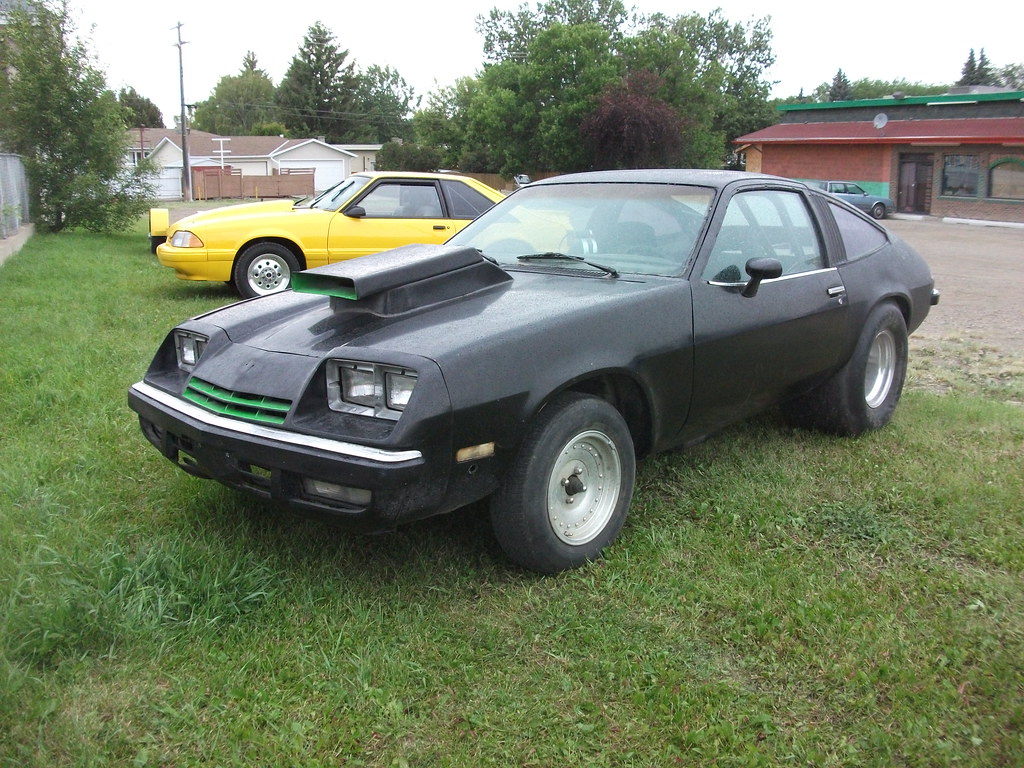
3. **1975 Chevrolet Monza**
Don’t let the “sporty” badge or its vaguely muscle car-esque lines fool you; the 1975 Chevrolet Monza was a masterclass in automotive deception. On the surface, it projected an image of performance and excitement, a compact yet capable machine ready to take on the open road. But peel back that veneer, and you’d find an underwhelming powertrain and a host of compromises that made it a true letdown.
Born from General Motors’ ambitious, if somewhat misguided, experimentation with compact vehicles, the Monza was supposed to be a youthful, energetic addition to the lineup. It looked aggressive, with a sleek fastback profile that hinted at speed. Yet, the reality of its performance was a stark contrast to its styling. Drivers often found themselves yearning for more grunt, as the engines simply couldn’t deliver the thrills its appearance promised.
And the woes didn’t stop there. The Monza became infamous for its poor reliability, a trait that plagued many GM vehicles of that era. Rust issues seemed to sprout like wildflowers, and various design compromises became apparent with continued use. It was a car that looked like it belonged in a street race but was more likely to be found on the side of the road, awaiting a tow truck.
Ultimately, the Monza serves as a prime example of how superficial styling can mask fundamental weaknesses. It was a car that traded on looks, hoping to capture the spirit of its muscle car brethren, but lacked the engineering integrity to back up the illusion. A sporty badge, in this case, was just that: a badge, and one that ultimately failed to deceive discerning drivers for long. Definitely more pose than power.
Car Model Information: 1964 Chevrolet Corvair Monza
Caption: 1978–1980 Chevrolet Monza Coupé
Name: Chevrolet Monza
Manufacturer: Chevrolet
Production: 1974–1980
ModelYears: 1975–1980
Assembly: Lordstown, Ohio
Predecessor: Chevrolet Vega
Successor: Chevrolet Cavalier
Class: Subcompact
Layout: FR layout
Platform: GM H platform (RWD)
BodyStyle: hatchback
Engine: Chevrolet 2300 engine,Straight-4,151 cuin
Abbr: on
Transmission: Turbo-Hydramatic#THM200,automatic transmission
Wheelbase: 97.0 in
Length: 179.3 in
Width: 65.4 in
Height: 50.2 in
Weight: 2800 lb
Related: Pontiac Sunbird,Buick Skyhawk,Oldsmobile Starfire
Categories: 1980s cars, 2+2 coupés, Articles with short description, Cars discontinued in 1980, Cars introduced in 1975
Summary: The Chevrolet Monza is a subcompact automobile produced by Chevrolet for the 1975 through 1980 model years. The Monza is based on the Chevrolet Vega, sharing its wheelbase, width, and standard inline-four engine. The car was designed to accommodate the GM-Wankel rotary engine, but due to mediocre fuel economy and emissions-compliance issues the engine was cancelled, and a V8 engine option was substituted. The Monza name has also been used for several other cars.
Introduced for the 1975 model year, the Monza 2+2 and Monza Towne Coupe competed with the Ford Mustang II and other sporty coupes. General Motors’ H-body variants, the Buick Skyhawk and Oldsmobile Starfire, were produced using the Monza 2+2’s body with grille and trim variations and Buick’s 3.8 liter V6 engine. The Pontiac Sunbird variant was introduced for the 1976 model year, initially offered only in the Monza Towne Coupe body with the 2+2 hatchback added for the 1977 model year. The Monza nameplate originated in mid-1960 for the sport version of the Chevrolet Corvair.
Get more information about: Chevrolet Monza
Buying a high-performing used car >>>
Brand: Chevrolet Model: Monza
Price: $29,988 Mileage: 74,787 mi.
Read more about: 15 Classic Cars You Might Want To Skip: An Expert Guide for Discerning Collectors
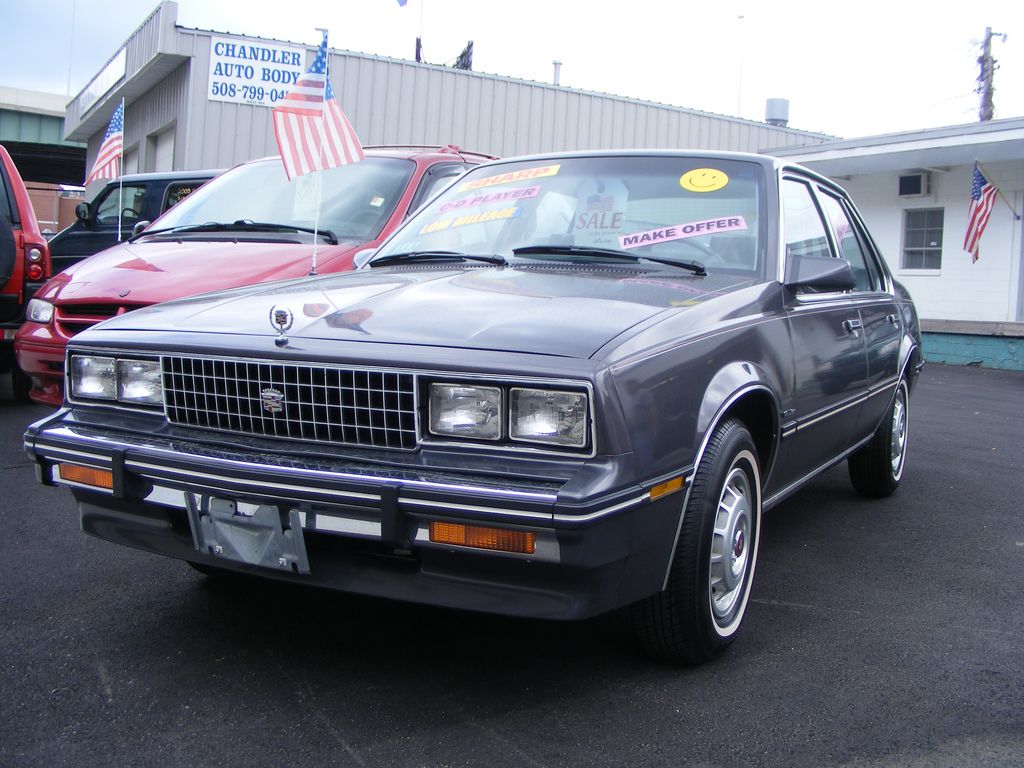
4. **1982 Cadillac Cimarron**
Oh, the Cimarron. Just hearing the name still elicits groans from Cadillac enthusiasts and automotive historians alike. This was not merely a misstep; it was an embarrassing, brand-damaging blunder that General Motors is still likely trying to forget. The idea was simple, if deeply flawed: lure younger buyers to the prestigious Cadillac marque with a compact, “entry-level” luxury car. The execution, however, was a masterclass in corner-cutting.
Cadillac’s genius solution? Take a Chevrolet Cavalier, slap a few Cadillac badges on it, give it some slightly nicer trim, and then, with a straight face, charge double the price. It was the automotive equivalent of putting a tuxedo on a farm animal and calling it a thoroughbred. Consumers and critics were not amused; in fact, they were downright outraged by this lazy rebadge job.
The Cimarron offered virtually nothing to justify its inflated price tag or its Cadillac crest. It rode like a Cavalier, performed like a Cavalier, and looked, unmistakably, like a Cavalier trying too hard. The market, surprisingly sophisticated, saw right through the charade. This wasn’t luxury; it was an insult to the very concept of luxury and to the Cadillac nameplate itself.
The backlash was swift and severe. Critics shredded the Cimarron, not just for its lack of originality, but for the damage it inflicted upon Cadillac’s venerable image. It took years, and countless genuinely excellent vehicles, for GM’s luxury division to truly recover from this self-inflicted wound. The 1982 Cadillac Cimarron remains a cautionary tale, a stark reminder that true luxury can’t be faked, no matter how shiny the badge. An egregious example of an overrated disaster.
Read more about: From Quirky to Coveted: 14 Ugly American Cars That Are Now Seriously Cool Collector’s Items

5. **1976 Cadillac Eldorado Convertible**
In the mid-1970s, as emissions regulations tightened and safety concerns mounted, the future of the American convertible looked bleak. Cadillac, ever the purveyor of grand statements, decided to capitalize on this uncertainty with a bold marketing ploy: the 1976 Eldorado Convertible was heralded as the “last American convertible!” The ads screamed it, the dealers pushed it, and buyers, fearing the extinction of the open-top cruiser, snapped them up.
What drivers got for their money was nearly 5,000 pounds of pure, unadulterated glitz. This was a car designed for cruising boulevards, not carving canyons. Its sheer size and boat-like handling meant that while it might have turned heads with its opulent presence, it certainly wouldn’t win any awards for agility or driving dynamics. It was the automotive equivalent of a luxurious ocean liner, best enjoyed at a leisurely pace.
The “last American convertible” marketing proved incredibly effective, juicing sales for what was, in many ways, an automotive dinosaur. People believed they were buying a piece of history, the final chapter in a beloved automotive genre. However, as we all know, automotive history has a funny way of repeating itself.
When convertibles made a triumphant return just a few years later, Cadillac’s grand pronouncement began to look less like a prophecy and more like a farce. The hype surrounding this bloated behemoth, designed to create artificial scarcity and drive demand, quickly evaporated. The 1976 Eldorado Convertible, while undeniably a symbol of its era’s excess, became more of a testament to clever marketing than true automotive significance. It was a one-hit wonder whose “finality” was grossly overrated.
Car Model Information: 1976 Cadillac Eldorado Convertible
Caption: 1963 Cadillac Eldorado Convertible
Name: Cadillac Eldorado
Manufacturer: Cadillac
Production: 1952–2002
Layout: Front-engine, rear-wheel-drive layout
Aka: Cadillac Fleetwood Eldorado
Class: Personal luxury car
Successor: Cadillac CTS
Categories: 1960s cars, 1970s cars, 1980s cars, 1990s cars, 2000s cars
Summary: The Cadillac Eldorado is a luxury car manufactured and marketed by the Cadillac Motor Car Division of General Motors from 1952 until 2002, over twelve generations.
The Eldorado was at or near the top of the Cadillac product line. The original 1953 Eldorado convertible and the Eldorado Brougham models of 1957–1960 had distinct bodyshells and were the most expensive models offered by Cadillac during those years. The Eldorado was never less than second in price after the Cadillac Series 75 limousine until 1966. Beginning in 1967, the Eldorado retained its premium position in the Cadillac price structure, but was manufactured in high volumes on a unique, two-door personal luxury car platform.
The Eldorado carried the Fleetwood designation from 1965 through 1972, and was seen as a modern revival of the pre-war Cadillac V-12 and Cadillac V-16 roadsters and convertibles.
Get more information about: Cadillac Eldorado
Buying a high-performing used car >>>
Brand: Cadillac Model: Eldorado
Price: $29,499 Mileage: 31,898 mi.
Read more about: 15 Classic Cars You Might Want To Skip: An Expert Guide for Discerning Collectors
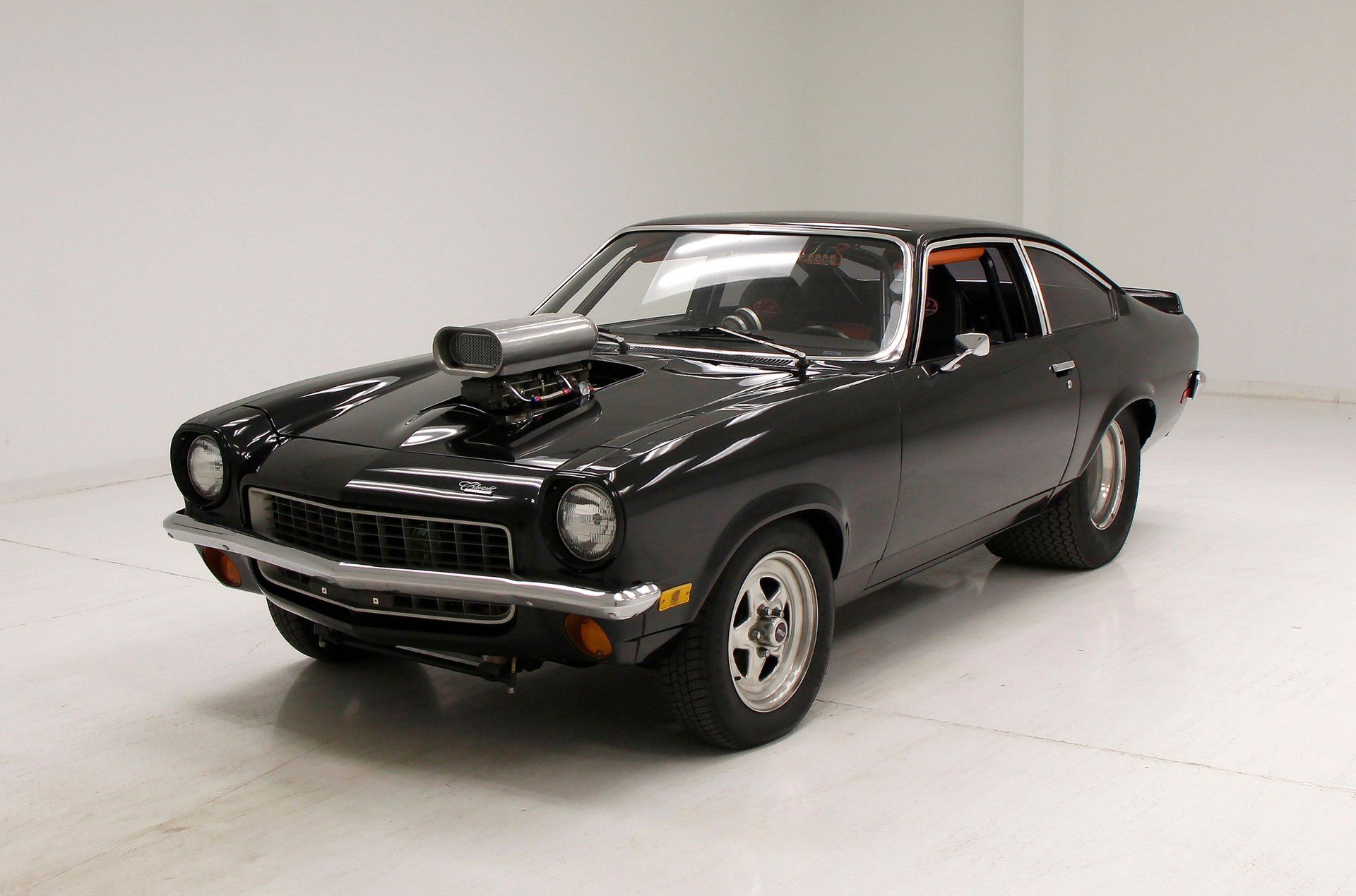
6. **1971 Chevrolet Vega**
The 1971 Chevrolet Vega was supposed to be a triumph of modern engineering, a tech-forward compact car that would redefine American small car expectations. Its innovative aluminum engine, a lightweight wonder, was supposed to be revolutionary. General Motors had high hopes, and even prestigious publications like Time magazine initially praised its design. The stage was set for a success story, but the script quickly veered into a full-blown disaster.
The problem wasn’t necessarily the concept; it was the execution. Shoddy assembly practices at the factory, combined with fundamental design flaws, systematically betrayed the Vega’s initial promise. Its aluminum engine, while innovative, suffered from severe overheating issues that led to premature wear and catastrophic failures. Owners quickly discovered a penchant for oil consumption that rivaled some V8s, and cylinder head gasket issues became legendary.
But the Vega’s woes weren’t confined to its problematic engine. Its rust-prone bodies seemed to dissolve before owners’ eyes, making even relatively new vehicles look like relics. Recalls became a regular occurrence, piling shame upon embarrassment for GM. By 1977, just six years after its celebrated debut, the Vega’s legacy was largely one of ridicule and mechanical misfortune.
What began as a shining example of American ingenuity quickly devolved into a cautionary tale about rushing products to market without adequate testing and quality control. The Chevrolet Vega stands as a monument to unfulfilled potential, a car that promised so much and delivered so little in terms of reliability and longevity. Its early praise was definitely overrated; its actual performance became a punchline.
Car Model Information: 1976 Chevrolet Vega
Name: Chevrolet Vega
Caption: 1971 Chevrolet Vega
Aka: Vega 2300
Manufacturer: Chevrolet
Production: 1970–1977
ModelYears: 1971–1977
Assembly: Lordstown, Ohio
Predecessor: Chevrolet Corvair
Successor: Chevrolet Monza
Class: Subcompact car
BodyStyle: notchback,hatchback,station wagon,Panel van
Layout: FR layout
Platform: GM H platform (RWD)
Engine: {{cvt,2.3,L,cuin,0,Chevrolet 2300 engine
Transmission: manual transmission,4-speed manual,overdrive (mechanics),Torque-Drive 2-speed Powerglide requiring manual shifting,Powerglide,Turbo-Hydramatic
Wheelbase: cvt
Length: cvt
Width: cvt
Height: cvt
Weight: cvt
Related: Pontiac Astre,Chevrolet Monza,Pontiac Sunbird#First generation (1976–1980),Buick Skyhawk#First generation (1975–1980),Oldsmobile Starfire#Second generation (1975–1980)
Designer: Bill Mitchell (designer)
Categories: 1970s cars, All articles needing additional references, All articles with unsourced statements, Articles needing additional references from July 2023, Articles with short description
Summary: The Chevrolet Vega is a subcompact automobile manufactured and marketed by GM’s Chevrolet division from 1970 until 1977. Available in two-door hatchback, notchback, wagon, and sedan delivery body styles, all models were powered by an inline four-cylinder engine designed specifically for the Vega, with a lightweight aluminum alloy cylinder block. The Vega first went on sale in Chevrolet dealerships on September 10, 1970. Variants included the Cosworth Vega, a short-lived limited-production performance version introduced spring 1975.
The Vega received the 1971 Motor Trend Car of the Year. Subsequently, the car became widely known for a range of problems related to its engineering, reliability, safety, propensity to rust, and engine durability. Despite numerous recalls and design upgrades, Vega’s problems tarnished its reputation and that of General Motors. Production ended with the 1977 model year.
The car was named for Vega, the brightest star in the constellation Lyra.
Get more information about: Chevrolet Vega
Buying a high-performing used car >>>
Brand: Chevrolet Model: Vega
Price: $30,000 Mileage: 82,344 mi.
Read more about: 15 Classic Cars You Might Want To Skip: An Expert Guide for Discerning Collectors
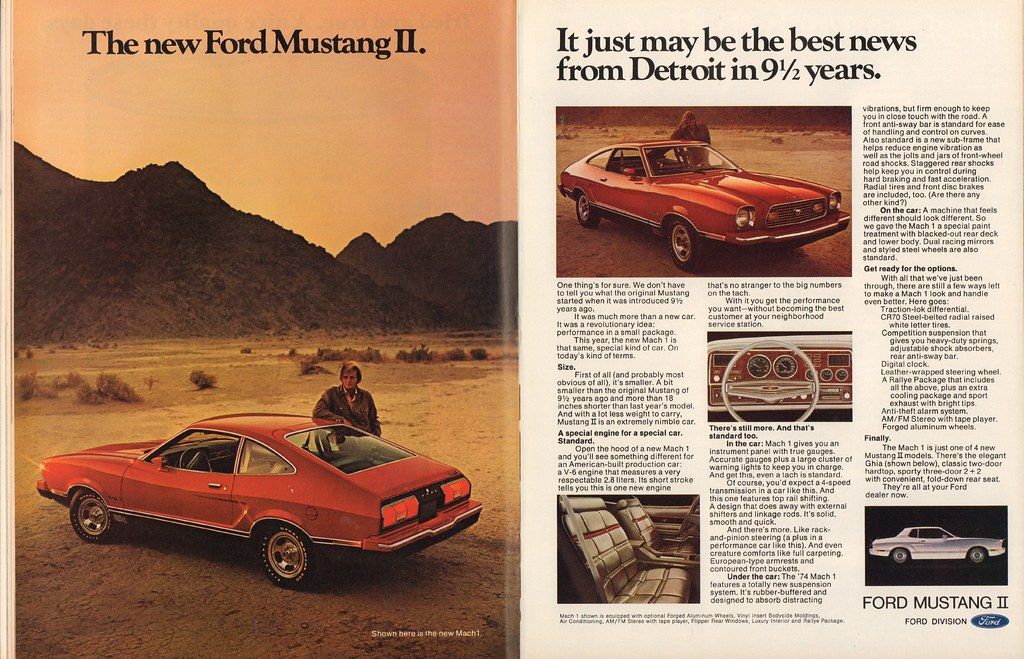
7. **1974 Ford Mustang II**
The original Ford Mustang was a phenomenon, a cultural touchstone that ignited the pony car craze. Its successor, the 1974 Ford Mustang II, however, landed with a very different kind of impact. Born during the throes of the 1973 oil crisis, this Mustang was a product of its time, designed to offer better fuel economy at a steep cost: its performance DNA. It marked a radical departure from its muscle car roots, sharing its humble bones with, of all things, the Ford Pinto.
This was a Mustang that decidedly ditched the roaring V8s and aggressive stance for a smaller, more economical package. While it arguably made sense for the era – and indeed, sales soared initially – enthusiasts reacted with a collective sigh of disappointment. The name “Mustang” carried immense expectations, a promise of power and style that the Mustang II simply couldn’t deliver. It was smaller in size, but the expectations certainly hadn’t shrunk.
Owners found its engines, initially, to be far less potent than what they associated with the iconic galloping horse emblem. Though V8s eventually returned, the car never fully shed its “Pinto-ized” reputation. It felt like a dilution of the brand, a compromise too far for those who cherished the original’s untamed spirit. It looked like a Mustang, perhaps, but it didn’t feel like one, especially to the purists.
The Mustang II is a complex car in Ford’s history. While it sold well and arguably kept the Mustang name alive during a challenging period, it did so by sacrificing much of what made the original so beloved. Its success was a commercial one, driven by economic necessity, rather than a triumph of engineering or performance. For many, it remains the most controversial and, indeed, one of the most overrated iterations of the legendary Mustang lineage.
You’ve seen the cars that got too much love. Now, meet the ones who never got enough. We’re shifting gears, literally and figuratively, to celebrate the unsung heroes of American automotive history. These are the machines that, for various reasons, didn’t get the widespread adoration they deserved, often lost in the shadow of their flashier, or simply better-marketed, contemporaries. But for those in the know, these overlooked gems offer a blend of unique attributes, genuine performance, and often, surprising value.
This isn’t just about pointing out cars that were unfairly ignored; it’s about giving them their rightful moment in the spotlight. We’re diving deep into the quirky designs, potent powertrains, and cultural misfires that relegated these beauties to the footnotes of history, only for them to emerge decades later as true collector’s items and enthusiast favorites. So, buckle up, because we’re about to unearth seven truly remarkable American automotive gems that were unjustly overlooked, exploring their unique attributes and why they absolutely deserve a second look. Get ready to add some new entries to your ‘dream garage’ list, because these cars prove that sometimes, the best treasures are hidden in plain sight.
Car Model Information: 2024 Ford Mustang GT Premium
Name: Second generation
Caption: Ford Mustang II coupe
Aka: Ford Mustang II , Ford T5 (in Germany)
Class: Pony car,Subcompact car
Production: 1973–1978
ModelYears: 1974–1978
Predecessor: Ford Mustang (first generation)
Successor: Ford Mustang (third generation)
Assembly: Unbulleted list
Layout: Front-engine, rear-wheel-drive layout
BodyStyle: coupé,hatchback
Related: Ford Pinto,Ford Pinto
Manufacturer: Ford Motor Company
Engine: ubl
Transmission: ubl
Wheelbase: cvt
Length: cvt
Width: cvt
Height: cvt
Designer: Buck Mook, Dick Nesbitt
Categories: All articles with dead external links, All articles with unsourced statements, Articles with dead external links from April 2024, Articles with permanently dead external links, Articles with short description
Summary: The second-generation Ford Mustang, marketed as the Ford Mustang II, is a two- or three-door, four-passenger, front-engine/rear-drive pony car manufactured and marketed by Ford from 1973 until 1978. Introduced in September 1973 for the 1974 model year, the Mustang II arrived roughly coincident with the oil embargo of 1973 and subsequent fuel shortages. Developed under Lee Iacocca, it was an “entirely new kind of pony car.” Ford “decided to call it Mustang II, since it was a new type of pony car designed for an era of high gas prices and fuel shortages.”
The Mustang II was 490 lb (222 kg) lighter and almost 19 in (483 mm) shorter than the 1973 Mustang, and derived from the subcompact Pinto platform. While sharing a limited number of driveline components with the Pinto, the Mustang II employed an exclusive subframe, isolating its front suspension and engine mount subframe. The steering used a rack-and-pinion design.
Named Motor Trend’s 1974 Car of the Year and reaching over 1.1 million sales over four years of production, the Mustang II is noted simultaneously for both its marketing prescience and strong sales – while criticized as having abandoned essential aspects of the Mustang heritage and described, in a retrospective after 40 years since its introduction, as embodying the Malaise era.
Get more information about: Ford Mustang (second generation)
Buying a high-performing used car >>>
Brand: Ford Model: Mustang II
Price: $48,997 Mileage: 24,328 mi.
Read more about: 15 Classic Cars You Might Want To Skip: An Expert Guide for Discerning Collectors
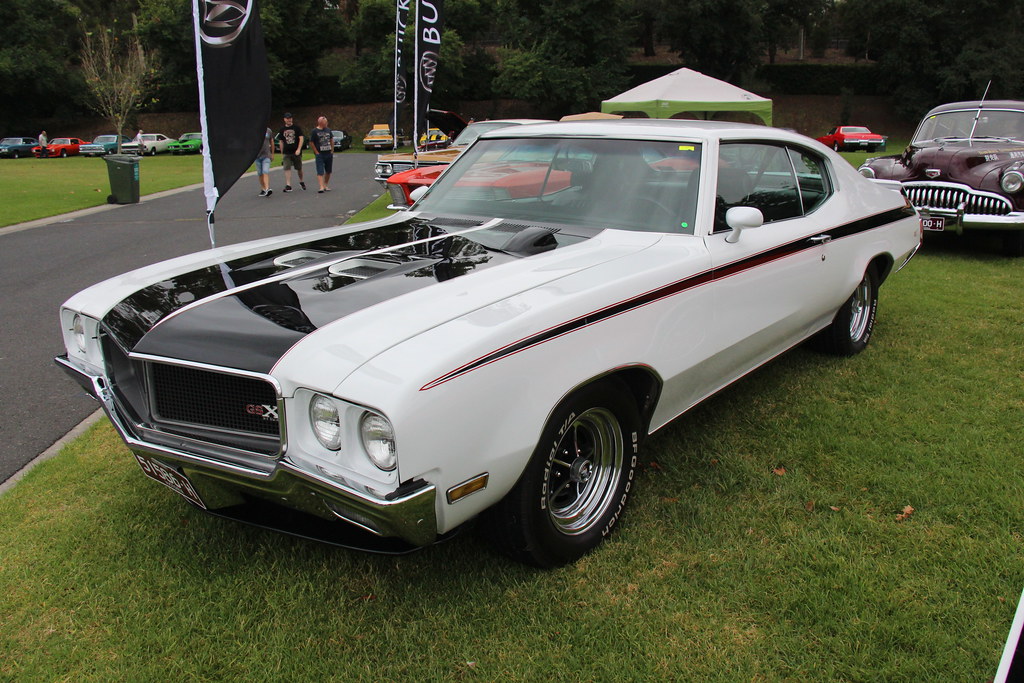
8. **1970 Buick GSX**
Ah, the 1970 Buick GSX – a car that bravely wore bright stripes but, for too long, was shrouded in the undeserved stigma of being a “grandpa car.” Can you believe it? Here was one of Detroit’s fastest muscle cars, a genuine straight-line speed demon, and buyers were busy flocking to Chevelles and GTOs. It’s a tragedy, really, because they completely missed out on a bona fide beast that could run with, and often beat, the best of them.
Beneath that vibrant exterior, the GSX packed a serious punch. We’re talking about a robust 455 cubic inch V8 engine, churning out a monumental 510 lb-ft of torque. This wasn’t just impressive for 1970; it was utterly dominant. This car wasn’t just built for show; it was engineered to leave challengers in its rearview mirror, boasting straight-line acceleration that would snap necks and glue you to your seat. It was pure, unadulterated American muscle with an unexpected level of refinement.
The irony is that today, its rarity is precisely what makes it gold. With a limited production run of just 678 models, the 1970 Buick GSX has solidified its place as one of the most coveted muscle cars of its era. Its striking two-tone paint job and aggressive stance, once perhaps too bold for some, are now celebrated. It’s a testament to how wrong public perception can be and why enthusiasts now scramble to own a piece of this overlooked, high-performance history.
Read more about: The Zenith of Chrome and Power: 15 Legendary Cars That Defined the 1950s Automotive Golden Era
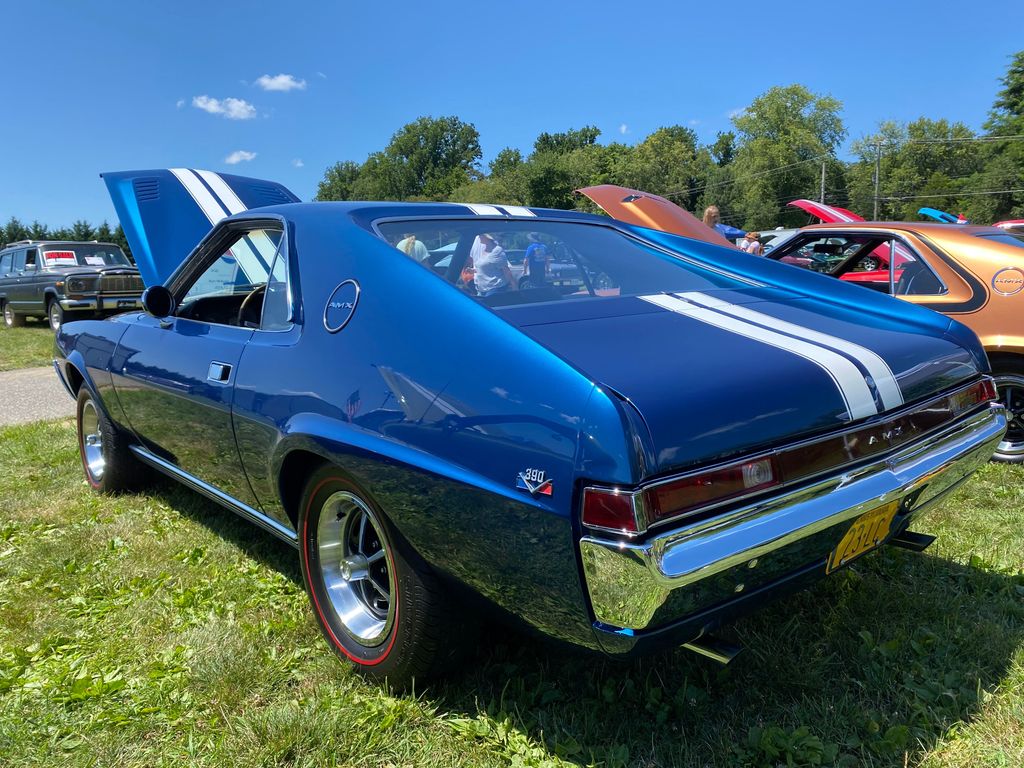
9. **1969 AMC AMX**
Talk about breaking from convention! In an era dominated by four-seater muscle cars, the 1969 AMC AMX boldly stepped onto the scene as a legitimate two-seater. This was American Motors Corporation literally tossing the rulebook out the window, daring to challenge the established order with something truly different. It was shorter, sharper, and had a genuine racing pedigree straight from the showroom floor, yet it largely flew under the radar.
Under its sleek, compact hood, the AMX housed a potent 390 V8, ready to unleash serious power. This car wasn’t just playing dress-up; it was a legitimate performance machine, designed to take on giants. It offered a thrilling, visceral driving experience that, frankly, put many more expensive, larger cars to shame. Think of it as AMC’s feisty, more agile answer to the Corvette, but without the premium price tag. It delivered a pure, undiluted muscle car sensation that was surprisingly accessible.
Sadly, buyers of the time simply overlooked it. Indifference was its unfortunate companion, leaving this gem largely forgotten by the masses. But as with all great sleepers, time has a way of revealing true worth. That initial indifference has morphed into a fervent desire, and its rarity now makes it gold for collectors. The AMX stands as a testament to AMC’s often-misunderstood genius, a car that was ahead of its time and is finally receiving the recognition it always deserved.
Read more about: Driven into the Sunset: Exploring 14 Iconic American Car Brands That Vanished After Their Heyday
10. **1970 Chrysler 300 Hurst**
Now, this is where things get truly interesting. Imagine a world where luxury and brute force didn’t just coexist, but spectacularly collided. Enter the 1970 Chrysler 300 Hurst, an automotive ‘land yacht’ that was audacious enough to blend boardroom style with pure, unadulterated muscle. This wasn’t your grandpa’s comfortable cruiser; this was a statement piece, wrapped in gold accents and packing enough power to thrill even the most jaded speed-seeker.
Beneath its opulent exterior, the 300 Hurst roared with a formidable 375 horsepower engine, a stark contrast to the refined image its luxury trappings conveyed. It was designed for those discerning, and often wealthy, individuals who wanted to cross continents in comfort but also demanded the ability to lay down rubber at a moment’s notice. The gold accents weren’t just for show; they hinted at the special, almost bespoke, nature of this limited-edition monster. It was elegance with an attitude, a true paradox on wheels.
The truly incredible part? Only 501 of these majestic machines were ever made. That’s right, 501. This means that for most people, the 1970 Chrysler 300 Hurst was, and remains, practically invisible. It’s a forgotten fusion of brute force and boardroom style, a whisper of automotive greatness that very few ever got to hear, let alone experience. Finding one today is like unearthing a secret chapter in muscle car history, a rare and exquisite testament to a time when manufacturers dared to be truly different.
Car Model Information: 2024 Ford Mustang GT Premium
Name: Chrysler 300 letter series
Caption: 1964 Chrysler 300-K Coupe
Class: Personal luxury car,Muscle car,Grand tourer
Manufacturer: Chrysler Corporation
Production: 1955–1965,1970
Assembly: Detroit,Michigan
Layout: Front-engine, rear-wheel-drive layout
Predecessor: Chrysler Saratoga
Successor: Chrysler 300 non-letter series
Categories: 1950s cars, 1960s cars, All Wikipedia articles written in American English, All articles containing potentially dated statements, All articles with unsourced statements
Summary: The Chrysler 300 “letter series” are high-performance personal luxury cars that were built by Chrysler in the U.S. from 1955 to 1965 and were a sub-model from the Chrysler New Yorker. After the initial year, which was named C-300 for its standard 300 hp (220 kW) 331 cu in (5.4 L) FirePower V8, the 1956 cars were designated 300B. Successive model years were given the next letter of the alphabet as a suffix (skipping “i”), reaching the 300L by 1965, after which the model sequence was discontinued while the “300” remained. At its introduction it was advertised as “America’s Most Powerful Car”.
The 300 “letter series” cars were among the vehicles built by Chrysler after World War II that focused on performance, and thus can be considered the beginning of the muscle car, though full-sized and more expensive. Chrysler had a long history of producing race car products going back to the Chrysler Six that was entered in the 1925 24 Hours of Le Mans, 1928 24 Hours of Le Mans, 1929 24 Hours of Le Mans, and the Chrysler Imperial Eight roadster in the 1931 24 Hours of Le Mans. The 1955 C-300 and the 1956 300B were raced with very little modification at NASCAR races to include Watkins Glen International where it won races multiple times.
The automaker reintroduced the 300 designations again for performance-luxury sedans in 1999, using the 300M nameplate from 1999 to 2004, and expanding the 300 series with a reintroduction of a new Hemi-engineered V8 installed in the 300C, the top model of a new Chrysler 300 line, a new rear-wheel drive car launched in 2004 for the 2005 model year.
Get more information about: Chrysler 300 letter series
Buying a high-performing used car >>>
Brand: Chrysler Model: 300 Hurst
Price: $48,997 Mileage: 24,328 mi.
Read more about: Gone But Not Forgotten: Unearthing the Stories Behind 14 Iconic American Cars That Drove Off into the Sunset
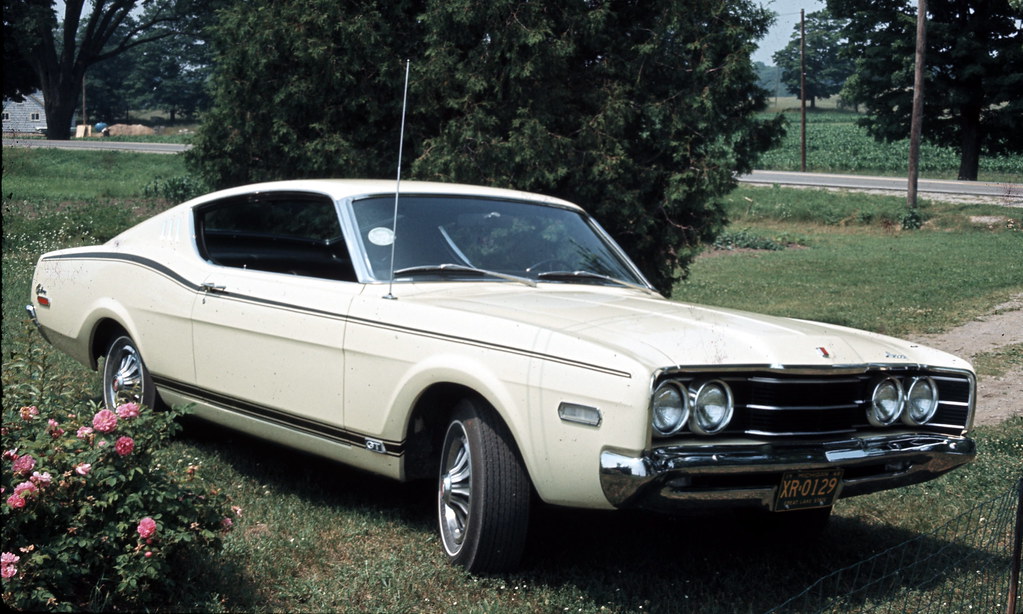
11. **1968 Mercury Cyclone**
When you think of classic American muscle, Ford’s Mustang often hogs the spotlight. But lingering in its shadow, unjustly so, was the formidable 1968 Mercury Cyclone. This was a car that packed serious power, boasted a proud racing lineage, and sported bold lines that demanded attention. Yet, dealers, ever keen to push the more popular pony, inadvertently left this street sleeper largely unnoticed. It’s a crying shame, because the Cyclone was a force to be reckoned with.
This isn’t just hyperbole. The Cyclone wasn’t some cobbled-together wannabe; it had genuine NASCAR DNA flowing through its chassis. It was built for speed and engineered for performance, designed to dominate both on the track and on the street. Its aggressive styling wasn’t just for show; it hinted at the raw capability lurking beneath its hood, ready to be unleashed by any driver brave enough to tap into its fury.
So, if you’re a connoisseur of rare American fury, a hunter of the truly exceptional with a taste for NASCAR heritage, the 1968 Mercury Cyclone is one you absolutely need to rediscover. It’s the kind of car you probably passed by without a second glance back in the day, but today, it represents a genuine opportunity to own a piece of overlooked performance history. Don’t let the Ford shadow fool you; the Cyclone was a star in its own right, just waiting for the right audience.
Read more about: From Anemic to Awkward: Unmasking 15 Muscle Cars That Truly Missed the Mark – And Why We Can’t Forget Them

12. **1964 Ford Fairlane Thunderbolt**
Forget subtle; the 1964 Ford Fairlane Thunderbolt was built for one thing and one thing only: absolute, unadulterated speed. This wasn’t your Sunday cruiser; this was Ford’s factory drag racer, a monstrous creation stripped down to its bare essentials and stuffed with a legendary 427-cubic-inch V8. It was a purpose-built weapon, designed not for the daily commute, but for NHRA domination, and dominate it did.
Every ounce of this car screamed performance. From its lightweight components to its brutally powerful engine, the Thunderbolt was a masterclass in single-minded engineering. It wasn’t about creature comforts or luxurious trimmings; it was about shaving milliseconds off quarter-mile times. This was pure, raw muscle personified, a car that made no apologies for its singular focus and delivered on its promises with every earth-shattering launch down the drag strip.
Its extreme rarity only adds to its mystique; a mere 100 units ever left the factory line. To call it “street-legal only on paper” is an understatement – this beast was meant for the track. Consequently, it remained practically invisible to average buyers, a secret known only to a select few hardcore enthusiasts and racers. The 1964 Ford Fairlane Thunderbolt is an ultimate hidden gem, a monument to a no-compromise approach to performance that redefined American drag racing.
Car Model Information: 2024 Ford Mustang GT Premium
Name: Ford Fairlane Thunderbolt
Caption: Ford Fairlane Thunderbolt
Manufacturer: Ford Motor Company
ModelYears: 1964
Class: Muscle car
Assembly: Dearborn, MI
BodyStyle: sedan (automobile)
Layout: FR layout
Related: Mercury Cyclone
Wheelbase: 115.5 in
Abbr: on
Length: 197.5 in
Width: 72.5 in
Transmission: Cruise-O-Matic#MX.2FFX,manual transmission
Engine: {{convert,427,cuin,L,1,abbr=on,Ford FE engine#427
Weight: 3203 lb
Categories: All articles covered by WikiProject Wikify, All articles with bare URLs for citations, Articles covered by WikiProject Wikify from September 2022, Articles needing cleanup from September 2022, Articles with bare URLs for citations from September 2022
Summary: The Ford Fairlane Thunderbolt is a limited production, factory experimental, drag racing version of the Ford Fairlane produced during the 1964 model year only. A total of 100 units were produced; forty-nine 4-speeds and fifty-one automatics. A 4 speed secured the stick CLASS win at the US Nationals and secured the 1964 NHRA Super Stock championship for Ford.
Get more information about: Ford Fairlane Thunderbolt
Buying a high-performing used car >>>
Brand: Ford Model: Fairlane Thunderbolt
Price: $48,997 Mileage: 24,328 mi.
Read more about: Unleash the Beasts: 14 Legendary American Cars That Roared Through the 1960s, Forging an Unforgettable Automotive Decade

13. **1971 Plymouth GTX**
While its flashier sibling, the Barracuda, often stole the limelight, the 1971 Plymouth GTX was quietly asserting itself as Plymouth’s classiest brawler. This car wasn’t just about raw aggression; it was about combining the untamed spirit of the Road Runner with a dose of upscale trim and, of course, formidable big-block firepower. It was a refined brute, a muscle car that had learned a few manners without sacrificing any of its punch.
Unfortunately, the early 1970s brought a perfect storm of challenges that dulled demand for such magnificent machines. Tightening emissions regulations and ever-increasing insurance hikes made performance cars a harder sell. In this environment, the GTX, with its subtle blend of power and panache, often got overlooked as buyers chased the more ostentatious models or simply opted for something less fiscally punishing.
But for those who truly understood, the GTX was a revelation. It offered a sophisticated alternative to the “wild street punk” image of some contemporaries, proving that a muscle car could have both gravitas and guts. Today, it stands as a cherished treasure, a testament to a fleeting moment when Plymouth crafted a high-performance machine that was as elegant as it was intimidating. Collectors are wise to recognize the value in this ‘classy brawler,’ a true standout that was unjustly passed over.
Car Model Information: 1971 Plymouth GTX
Name: Plymouth GTX
Manufacturer: Plymouth (automobile)
Production: 1967–1971,44,178 units
Class: Muscle car
Assembly: Detroit,Michigan
Layout: FR layout
Platform: Chrysler B platform
Caption: 1970 Plymouth GTX
Categories: 1970s cars, All articles needing additional references, Articles needing additional references from February 2010, Articles with short description, Cars discontinued in 1971
Summary: The Plymouth GTX is an automobile manufactured by Chrysler and marketed under its Plymouth division from 1967 to 1971. Introduced as the Belvedere GTX, it was positioned as a mid-sized upscale-trimmed performance muscle car through the 1971 model year.
Get more information about: Plymouth GTX
Buying a high-performing used car >>>
Brand: Plymouth Model: GTX
Price: $45,000 Mileage: 84,281 mi.
Read more about: From Anemic to Awkward: Unmasking 15 Muscle Cars That Truly Missed the Mark – And Why We Can’t Forget Them
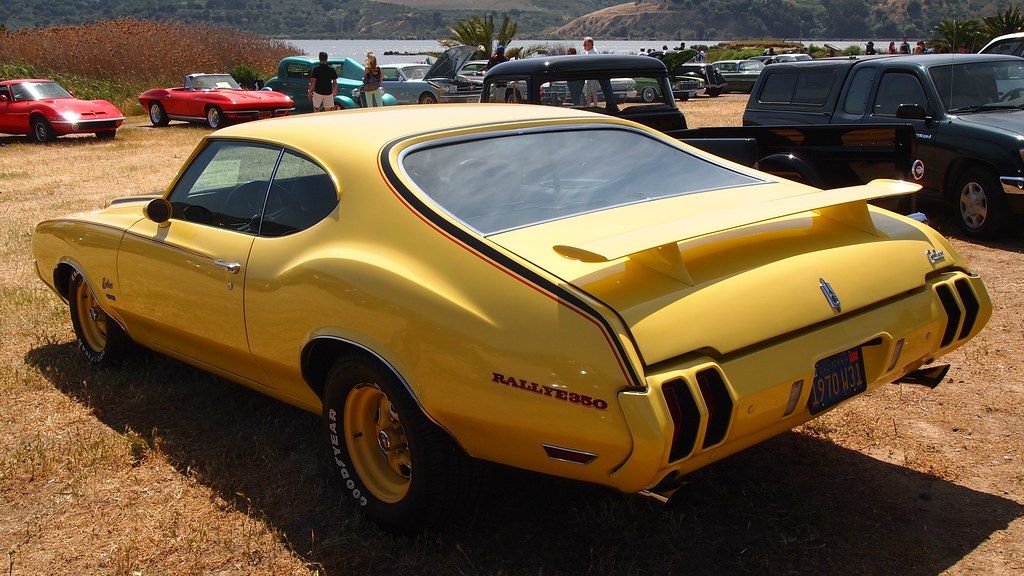
14. **1970 Oldsmobile Rallye 350**
If you wanted to make a statement in 1970 on a budget, Oldsmobile had just the answer: the Rallye 350. This car wasn’t just yellow; it was *bright yellow* and bold on purpose, Oldsmobile’s unapologetic play for budget muscle with undeniable flair. It was explicitly designed to grab the attention of younger drivers, offering a spirited performance package that was surprisingly insurance-friendly – a rarity in the muscle car era.
The Rallye 350 was a delightful paradox. It was loud enough to turn heads, boasting an aggressive look that screamed performance, yet its moderate 350 cubic inch engine and Oldsmobile badge meant it didn’t come with the crippling insurance premiums of its bigger, more fearsome siblings. This blend of attributes, however, caused some confusion among buyers. Was it a serious muscle car, or just a flashy compact? The market struggled to place it, and unfortunately, many passed it by.
Today, those who overlooked the 1970 Oldsmobile Rallye 350 are likely kicking themselves. What was once an affordable, attention-grabbing oddity is now a highly sought-after collector’s item. Its unique color, bold styling, and historical significance as Oldsmobile’s attempt to bridge the gap between budget and muscle make it a fantastic find. It’s a vibrant reminder that sometimes, the greatest gems are found where you least expect them, shining brightly in their own distinctive way.
Car Model Information: 2024 Ford Mustang GT Premium
Caption: 1971 Oldsmobile Cutlass Supreme Convertible
Name: Oldsmobile Cutlass
Manufacturer: Oldsmobile
Production: 1961–1999
Successor: Oldsmobile Intrigue
Class: Compact car
Categories: 1970s cars, 1980s cars, 1990s cars, All Wikipedia articles needing clarification, All articles that may contain original research
Summary: The Oldsmobile Cutlass was a series of automobiles produced by General Motors’ Oldsmobile division between 1961 and 1999. At its introduction, the Cutlass was Oldsmobile’s entry-level model; it began as a unibody compact car, but saw its greatest success as a body-on-frame intermediate. The Cutlass was named after Vought F7U Cutlass, as well as the type of sword, which was common during the Age of Sail.
Introduced as the top trim level in Oldsmobile’s compact F-85 Series, the Cutlass evolved into a distinct series of its own, spawning numerous variants. These included the 4-4-2 muscle car in 1964, the upscale Cutlass Supreme in 1966, the high-performance Hurst/Olds in 1968, and the Vista Cruiser station wagon.
By the 1980s, Oldsmobile was using the Cutlass as a sub-marque, with numerous vehicle lines bearing the name simultaneously. The compact Cutlass Calais, midsize Cutlass Ciera, Cutlass Cruiser station wagon, and flagship midsize Cutlass Supreme were among the models available during this time.
In the 1990s, Oldsmobile began moving away from its traditional model lines, with other legacy vehicle nameplates like the 98 and 88 being discontinued in 1996 and 1999, respectively. The Cutlass name was likewise retired in 1999 in favor of the all-new Oldsmobile Alero, ending nearly 40 years of continuous Cutlass production.
Get more information about: Oldsmobile Cutlass
Buying a high-performing used car >>>
Brand: Oldsmobile Model: Rallye 350
Price: $48,997 Mileage: 24,328 mi.
Read more about: The End of an Era: 14 Iconic Muscle Cars That Roared into Automotive History But Faded from the Mainstream
And there you have it: a journey through the often-misunderstood annals of American automotive history. We’ve peeled back the layers of marketing hype to reveal cars that were, frankly, not worth the fuss, and then we turned the spotlight on the genuine, overlooked gems that deserved far more attention than they ever received. From the lumbering H2 to the lightning-fast Thunderbolt, each vehicle tells a story not just of engineering and design, but of cultural trends, market forces, and the fickle nature of public perception. It’s a wild ride through the highs and lows, the triumphs and the blunders, that define the truly unique landscape of American cars. So, next time you’re pondering automotive greatness, remember: sometimes, the most celebrated machines are mere shadows, while true brilliance waits patiently in the wings, just begging to be rediscovered. Happy hunting, fellow gearheads!

